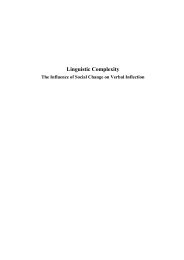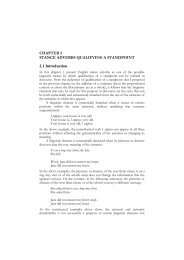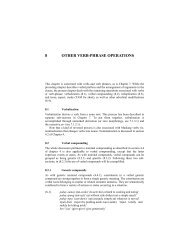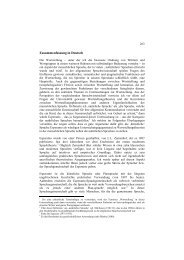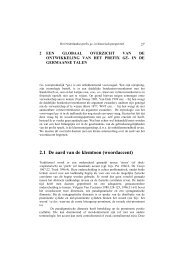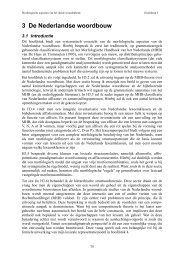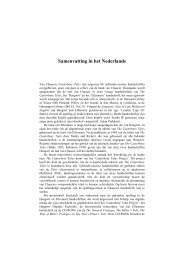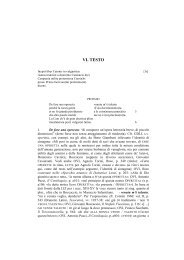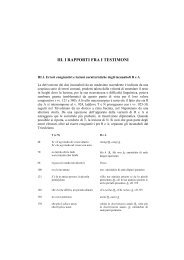Chapter 9 - LOT publications
Chapter 9 - LOT publications
Chapter 9 - LOT publications
Create successful ePaper yourself
Turn your PDF publications into a flip-book with our unique Google optimized e-Paper software.
Accounts of SLI in Afrikaans<br />
language of children with SLI. 165 The reason why the RDDR’s<br />
explanation is not adequate is because the verb’s phonological form is<br />
not dependent on the application of Move.<br />
Moreover, it is not the case that children with SLI only (optionally) omit<br />
grammatical morphemes; they also sometimes insert such morphemes<br />
into inappropriate contexts, as shown in the *You got a tape recorders<br />
(Gopnik 1990a:147) example given in chapter 2. The RDDR, in its<br />
current form, offers no explanation for the latter phenomenon.<br />
9.3.2. Predictions of the RDDR for Afrikaans<br />
According to Van der Lely (2003:127), the operation Move is optional in<br />
the grammar of children with SLI. Accordingly, a first consequence of<br />
the RDDR would be that the utterances of Afrikaans-speaking children<br />
with SLI should demonstrate varying word order. Specifically, in simple<br />
declaratives, the surface SOV order should occur frequently, as this is the<br />
order that will result if no movement takes place. Similarly, wh-questions<br />
in which the wh-phrase did not move from its original underlying<br />
position should also occur, rendering forms such as *Jy wat doen? ‘You<br />
what do?’ instead of Wat doen jy?. However, other surface word orders<br />
should, at least in principle, occur equally frequently. For example,<br />
sentences with the surface SVO main clause order, such as Ek eet druiwe<br />
‘I eat grapes’, should occur, with the verb eet moved to the left, but the<br />
object druiwe remaining in its initial underlying position.<br />
Secondly, in terms of the RDDR, Afrikaans-speaking children with SLI<br />
should have difficulties understanding and producing passive<br />
constructions – although, as pointed out above, Van der Lely’s reasons<br />
for why children with SLI experience problems with these constructions<br />
are not entirely clear. A third consequence of the RDDR would be that<br />
Afrikaans-speaking children with SLI should experience problems in<br />
interpreting and producing constructions in which co-referential<br />
relationships occur.<br />
165 I acknowledge that this criticism of RDDR is highly “theory-internal”, i.e., strictly<br />
related to the perspective of Chomsky’s (1995a) Minimalist Programme. Some of Van<br />
der Lely’s proposals might be compatible with a Distributive Morphology approach,<br />
where functional heads are spelled out late in the derivation, i.e., after syntactic<br />
computation.<br />
262



